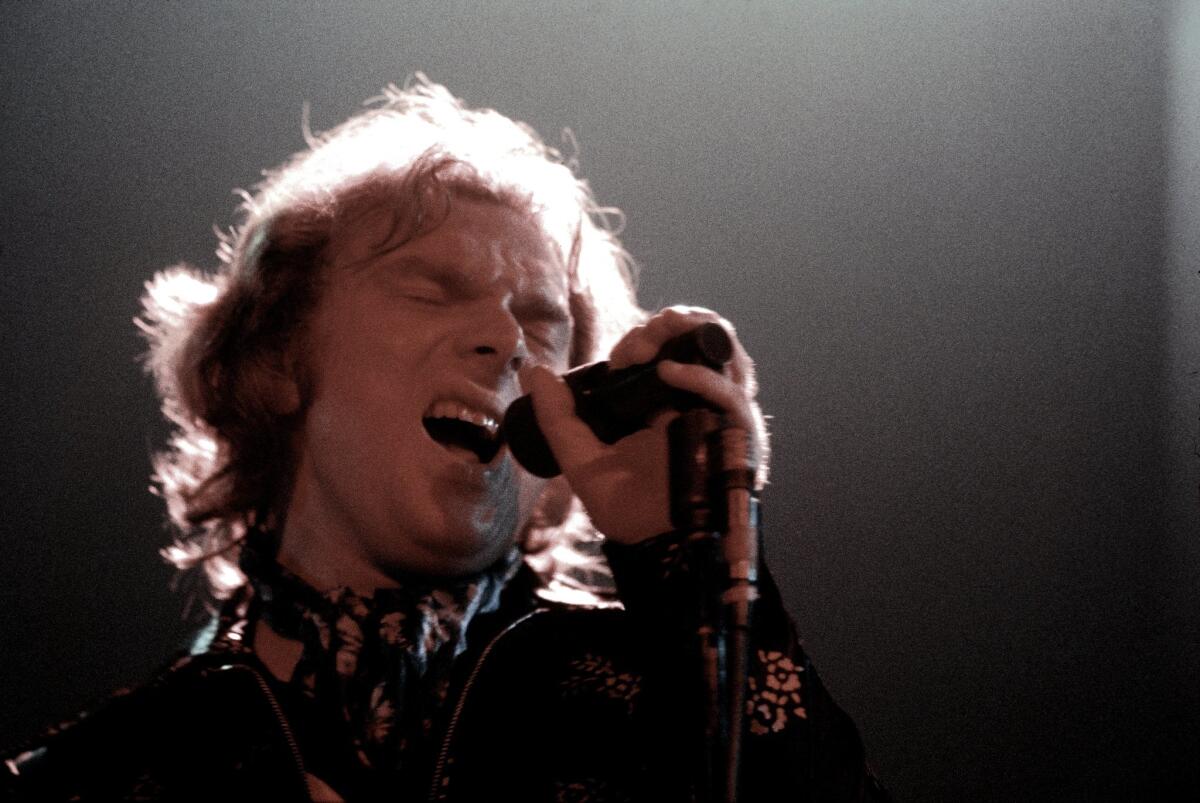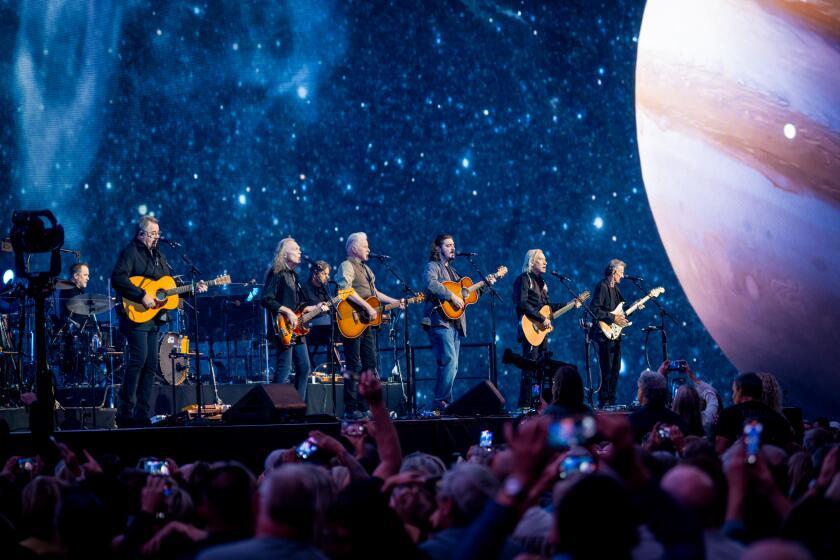Review: Van Morrison’s sequel to his electrifying 1973 tour ‘It’s Too Late to Stop Now’ captures one of rock’s greatest moments

Van Morrison, “The Belfast Cowboy,” was riding high in 1973 — as a songwriter, as a singer and as a performer. For proof, music lovers need look no further than the double live album “It’s Too Late to Stop Now” that Morrison released the following year. It’s long regarded as one of the great live recordings in rock history.
More than four decades later, Morrison and Sony Legacy, the label that now controls most of his catalog, are releasing a more expansive exploration of that time in his career with the release of the four-disc sequel, “...It’s Too Late to Stop Now, Volumes II, III and IV & DVD,” encompassing three CDs and one DVD highlighting other performances during that same tour.
Morrison had assembled a group he dubbed the Caledonia Soul Orchestra, expanding on the basic rock-blues-soul quartet of guitar, keyboard, bass and drums. He also employed a two-member horn section with trumpet and saxes and a five-piece string ensemble that gave the Irish singer and songwriter an exceptionally wide instrumental palette with which to work.
I think it is great there are still people who appreciate the beauty of a record — a real record, not a purchase of bad quality air through a wire.
— Van Morrison in 2008
The original album had 18 tracks recorded at the Troubadour in West Hollywood, the Santa Monica Civic Auditorium and the Rainbow Theatre in London, the same venues from which the new set culls 45 additional performances. That gives a strong Southern California slant to the overall collection. The DVD features nine songs filmed at the Rainbow Theatre.
There’s some duplication of songs — cornerstone numbers including “Caravan,” “Into the Mystic,” “These Dreams of You,” “Gloria” and “Listen to the Lion” among them. But Morrison has always prized making music in the moment, rather than robotically replicating his recordings, so hardcore fans will likely revel in the illuminating differences between the versions.
Although he’s been more interested in exploring his artistry than cranking out hits, it was at this time in the early ’70s when Morrison’s artistry intersected most frequently with the pop music mainstream, and his songs were regularly getting airplay on rock and pop stations.
That produced an arsenal of audience-familiar songs such as “Moondance,” “Domino,” “Come Running,” “Wild Night,” and “Warm Love,” along with those previously cited. Those are mixed with several soul and R&B songs that influenced him, including Ray Charles’ “I Believe to My Soul,” Sonny Boy Williamson’s “Help Me” and “Take Your Hand Out of My Pocket,” Willie Dixon’s “I Just Want to Make Love to You” and Buddy Johnson’s “Since I Fell for You.”
His reading of Hank Williams’ “Hey Good Lookin’,” for example, demonstrates an equal familiarity with and appreciation of the classic honky-tonk version and Ray Charles’ big-band reworking in 1962.
As such forbears and influences as Charles and Jerry Lee Lewis typically did in concert, Morrison makes each one utterly unique, his elastic vocals stretching words, notes and syllables to the extreme, but always for emotional effect, never for ego-driven showboating.
A testament to his interpretive acumen is “Bein’ Green,” a song written by Joe Raposo and first popularized by “Sesame Street’s” Kermit the Frog as an expression of how it feels being different than most of those around him. Morrison found the universal meaning and runs with it in the showcase performance here from the Troubadour.
Among his own songs, he dives equally deep into the spiritually focused “Listen to the Lion,” a song about paying attention to one’s inner voice rather than the noise of the outside world.
The original 16-track, 2-inch analog tapes have been remastered by Guy Massey, the same engineer who worked on remastering the Beatles catalog for the digital and nouveau vinyl era, and the performances sound crystalline, with a presence and full-bodied sound that’s visceral.
The DVD brings forth film footage that shows its age more than the audio recordings, and the sound is in mono, which was fairly typical for the time. The upside is we get to watch as well as listen to Morrison as a singer and bandleader in absolute sync and control of his music and his surroundings.
Along with the CD and LP iterations of the “Vols. II, III and IV” sets, they are available in high-resolution digital downloads at HDTracks, Pono and Mastered for iTunes sites — something Morrison has been vocal about in recent years.
“I am lucky I have an audience that is not into the fad of the download,” he told The Times in 2008. “I am very grateful for that.
“My fans must intrinsically understand the value of having a record in their hand,” he said at that time. “With so much standing to kill the record business and make it extinct, I think it is great there are still people who appreciate the beauty of a record — a real record, not a purchase of bad quality air through a wire that can erase with a punch of a button.
“People must really want to save the records,” he said, “in spite of the record business that cannot seem to see the forest for the wood.”
MORE:
Did Led Zeppelin steal a riff for ‘Stairway to Heaven’? A court will decide
Review: Bob Dylan and Mavis Staples inspire in Santa Barbara
Paul Simon returns with the exquisite ‘Stranger to Stranger’
Allen Toussaint’s ‘American Tunes’ album caps a distinguished career
Follow @RandyLewis2 on Twitter
For Classic Rock coverage, join us on Facebook
More to Read
The biggest entertainment stories
Get our big stories about Hollywood, film, television, music, arts, culture and more right in your inbox as soon as they publish.
You may occasionally receive promotional content from the Los Angeles Times.










